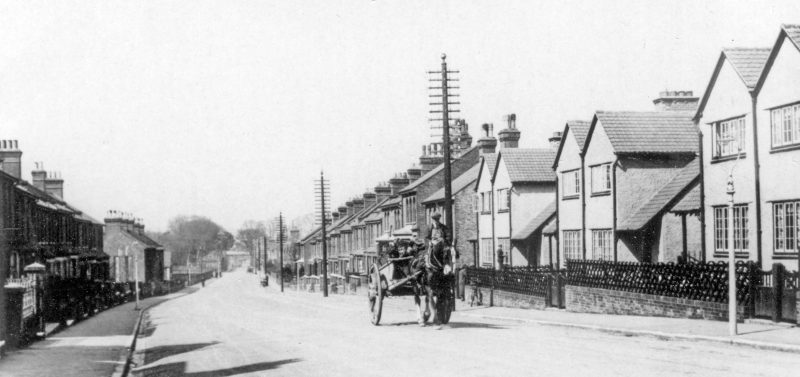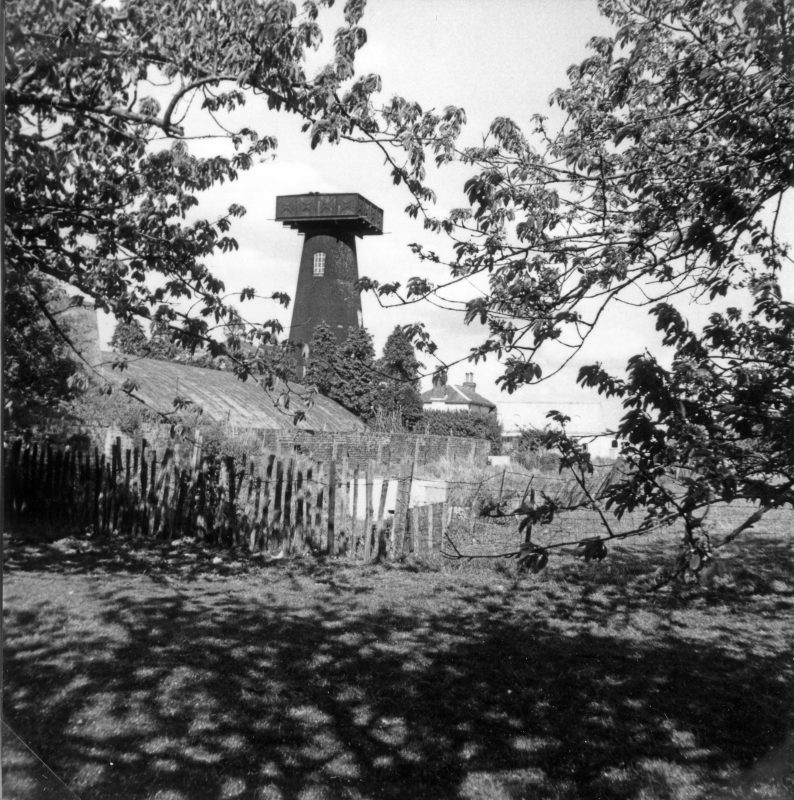Words Laurence Young Photographs Bygone Kent
If you have ever wondered what The Brents in Faversham has to do with geese, why Dark Hill is apparently gloomy or, indeed, where the town’s Snoure is, a recently published book might hold the answers you were looking for.
A second edition of a previously unpublished volume by the late Arthur Percival on the origins of local street names and places has just gone on sale at the Faversham Society’s Kentish Heritage Bookshop at 10-11 Preston Street.

Whitstable Road in 1935. In the background is the bridge that carried the freight train from the creekside
Arthur, doyen of local historians and a founder of the Faversham Society, died in November 2014, leaving a partly completed and fascinating book telling the story of how and why the town’s many curious street and places names came to be.
Co-edited by local men Stephen Rayner and Laurence Young, the first edition of Arthur Percival’s Faversham Streets and Places sold out within a few months of publication, despite two reprints; the two have now produced a second edition, with extra information and new pictures from the past.

Road widening and tree clearance in Dark Hill in 1960
To stand in Market Place and recognise that East Street, West Street and what used to be North Street (now Court Street) all meet there, is to acknowledge a key fact about the shape of the town of centuries past and to begin to understand how it developed into what it is today.
To be aware that West Street and East Street form part of an ancient roadway that still runs, though interrupted and disconnected in places, from the Blean westward to Murston and beyond is to understand something of how people and communities were connected for generations.
Similarly, to walk the route that leads from Bysing Wood Road and Dark Hill, along Napleton Road, Cross Lane and Gatefield Lane to Faversham Recreation Ground and across the Long Bridge to Macknade and into the countryside beyond is to follow an ancient trackway connecting town and country.

Copton Windmill in 1997. The upper part of the structure was dismantled shortly after.
It seems the idea for the book took shape in Arthur’s mind some two or three years before he died and arose from his interest in place names and his understanding that their origin and meaning could illuminate the history of an area or of a specific location; his interest extended to the names of streets and small local sites.
Some months after Arthur’s death Stephen and Laurence realised in a chance conversation that they had each had separate, intermittent email correspondence with him about local place names, with Arthur asking whether they knew how various roads, places and houses got their names. Neither realised until then that Arthur had also emailed drafts of a publication on local street and places names to each of them. The drafts Arthur sent form the basis of the book.

A celebratory procession for the 1911 Coronation in Newton Road
Stephen says: ‘In the years immediately before his death, Arthur had clearly put in a lot of effort exploring the meaning of street and place names in Faversham. Arthur’s interest in the etymology of place names was well known and he applied that enthusiasm to the work, alongside his unparallel knowledge of Faversham’s past.’
Laurence adds: ‘While Arthur didn’t finish it before his death, Steve and I wanted to complete the book both as a tribute to him and as an example of his immense talent in the field of local history.’
With hundreds of entries and photographs from Arthur’s extensive collection, the book spills the beans with intriguing snippets, such as where Faversham’s Treasure Island is, and why a house called Cratloe was named after a village in western Ireland.
And, in case you’re still wondering ‑ The Brents has nothing to do with geese, the name derives from an Anglo-Saxon word for steep; Dark Hill isn’t dark, but is the remnant of a shady Kentish tree tunnel; and Faversham’s Snoure is the slope that rises from the Westbrook to West Street and Napleton Road: the word means hill and also derives from Old English.
Arthur Percival’s Faversham Streets and Places is on sale at the Kentish Heritage Bookshop for £7.95. All profits from sales go to the Faversham Society.
Author: Laurence Young. Photographs: Bygone Kent